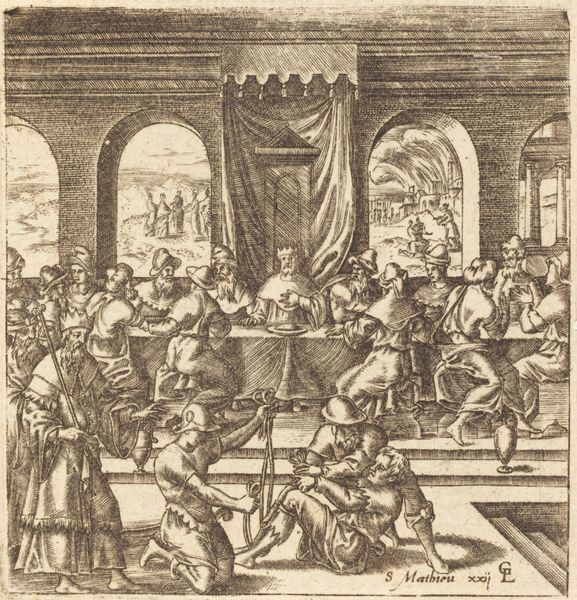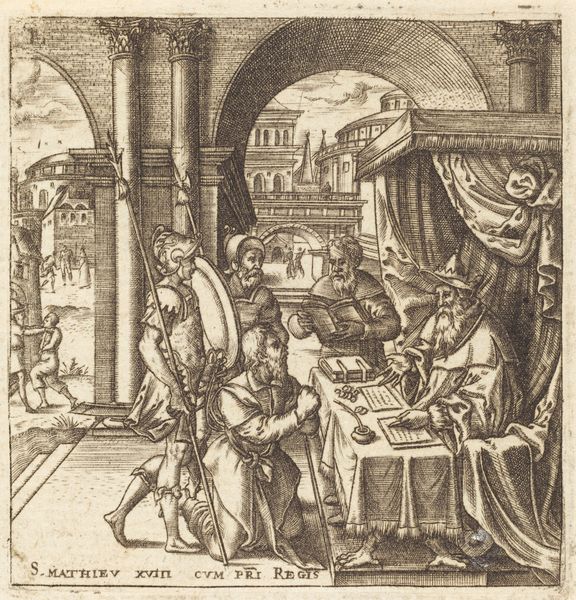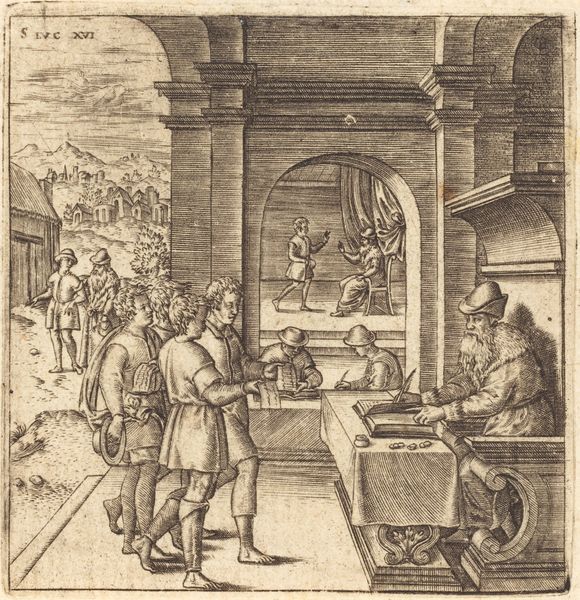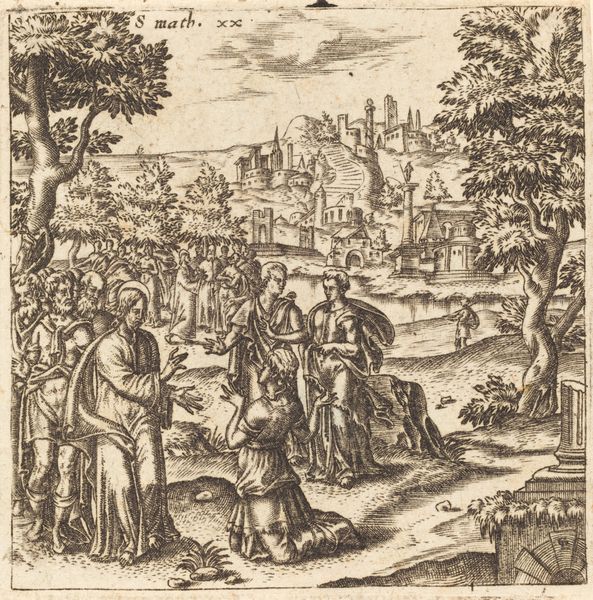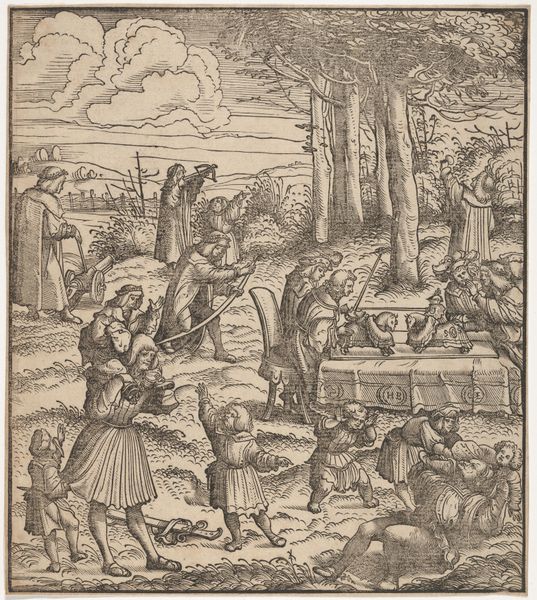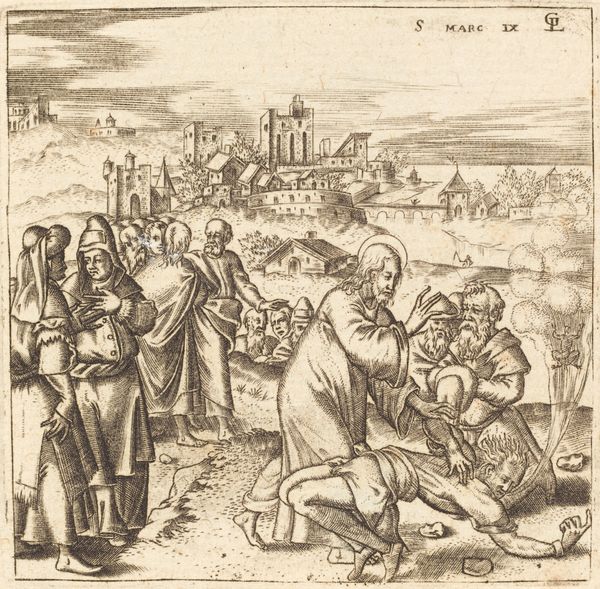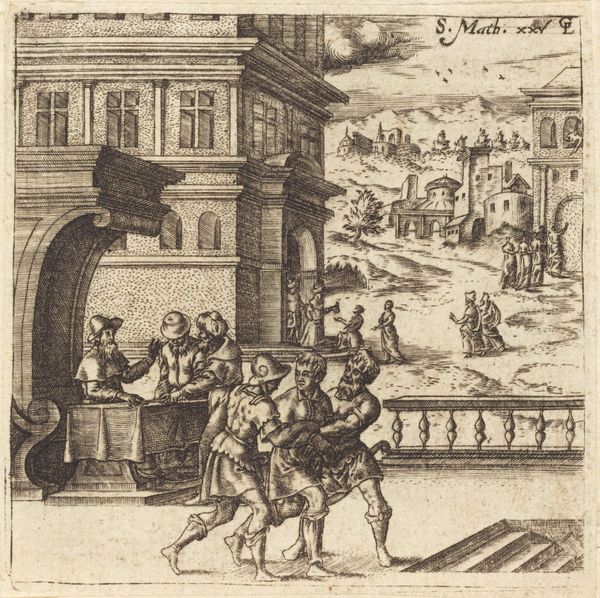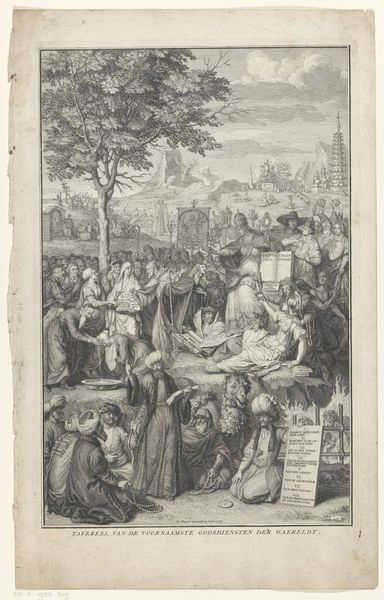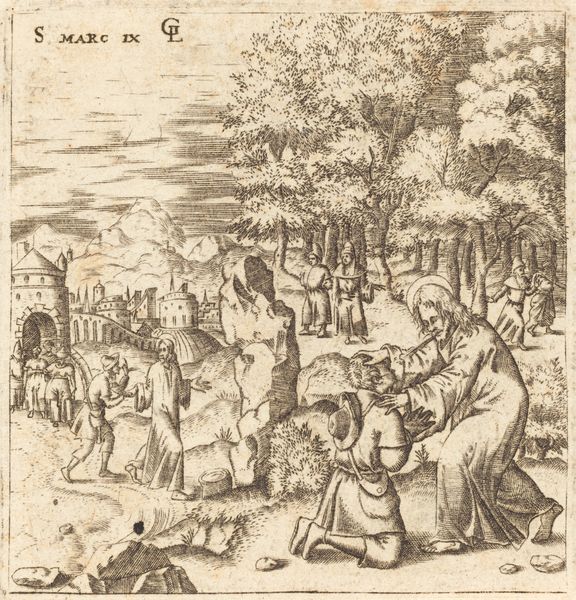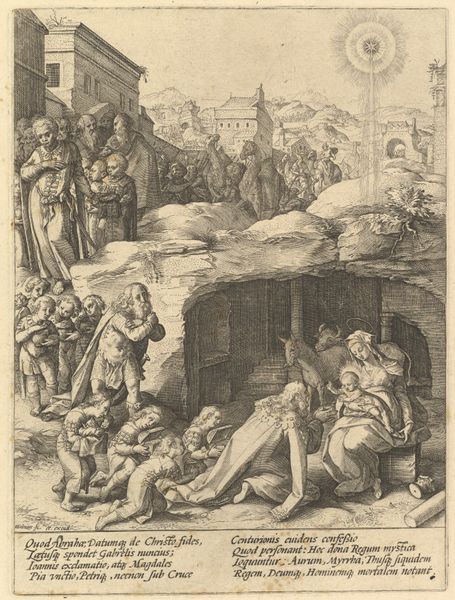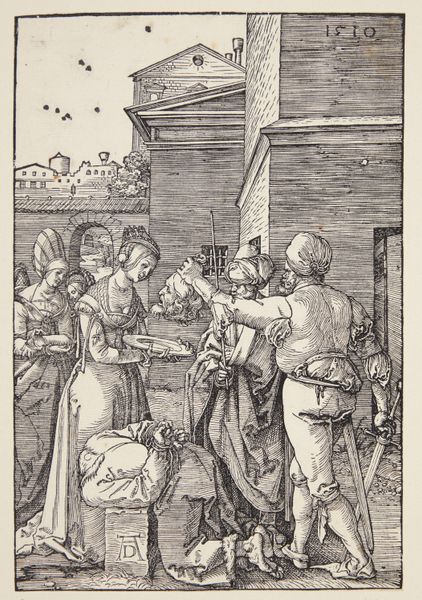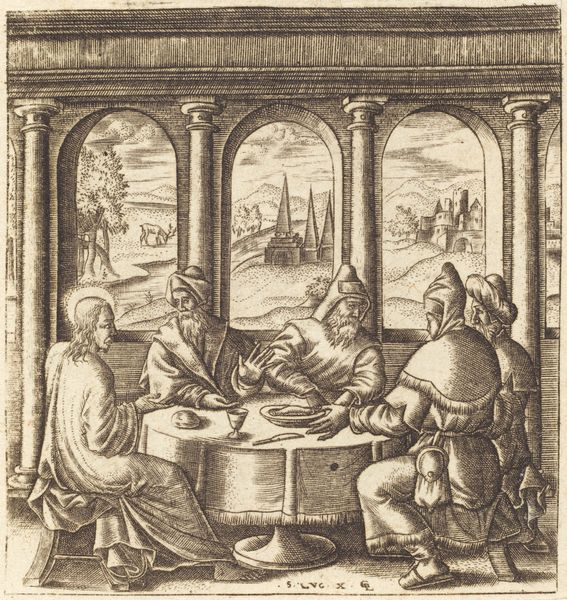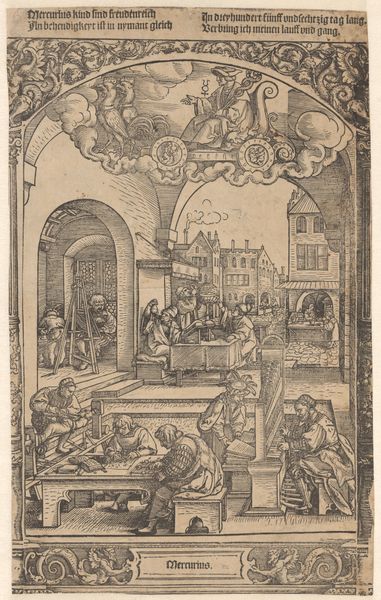
print, engraving
# print
#
11_renaissance
#
history-painting
#
northern-renaissance
#
engraving
Copyright: National Gallery of Art: CC0 1.0
Curator: This print by Léonard Gaultier, dating from around 1576 to 1580, depicts Christ Journeying to the House of a Pharisee. Note the artist’s mastery with the engraving medium, the careful rendering of light and shadow, and the geometric precision. What’s your initial read? Editor: There's a strong sense of duality at play here. The contrast between the open outdoor setting on the left and the enclosed indoor dining scene immediately struck me. One feels the weight of judgment from the ominous crowd in the distance. Curator: Indeed. The spatial organization establishes a potent dialectic. Christ is on the threshold, literally and metaphorically, between public life and private confines. The engraving offers a striking binary composition through architectural form and space. The clean line work of the columns contrasts with the mass of humanity visible on the horizon. Editor: Those lines! So much tension there. The military presence just beyond that archway—their spears almost mirror the columns. A society at war. And consider the symbolism of that shared meal: is it peace, forced camaraderie, or a last supper of sorts, fraught with unseen dangers? The tension vibrates throughout the scene. Curator: We should not overlook Gaultier’s skilled utilization of texture and density in this work. Notice how varied the lines are. We see cross-hatching to render three-dimensional volume and the tonal modulation, establishing a balanced surface effect and lending itself to the image’s iconographic legibility. Editor: The meal’s participants appear in varied attire, while Jesus is pictured with disciples with auras encircling their heads; they bring light with them. What kind of narrative can you glean from this scene, which takes from the Gospel of Luke, do you think the artist wants the viewer to grasp? Curator: To me, the tension and visual contrasts effectively enhance the narrative’s inherent theme, inviting meditation on themes of spiritual obligation against worldly excess, through masterful design and structure. Editor: And the human story in those architectural partitions and careful contrasts... I can now envision Gaultier’s image sparking complex reflections for a Renaissance audience steeped in religious symbolism, don’t you think?
Comments
No comments
Be the first to comment and join the conversation on the ultimate creative platform.
